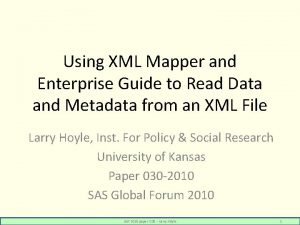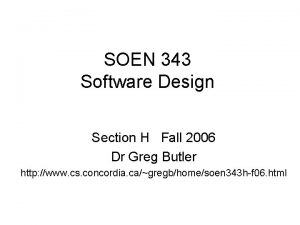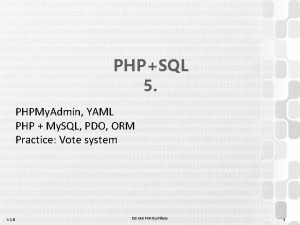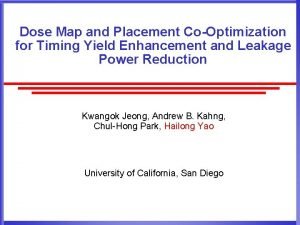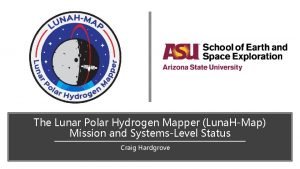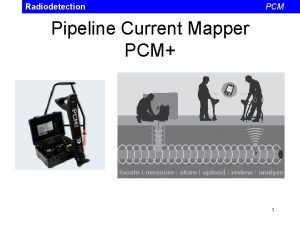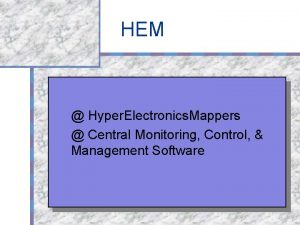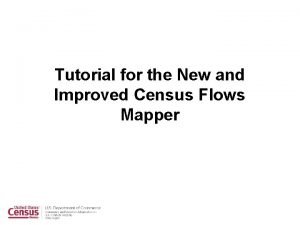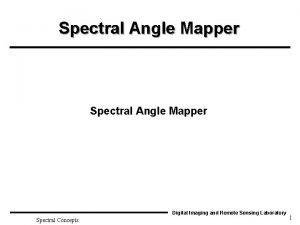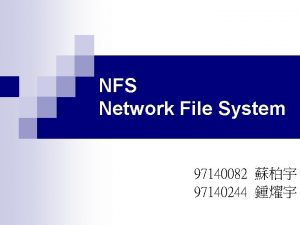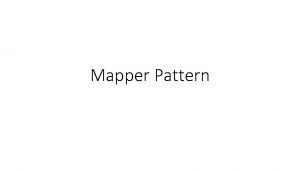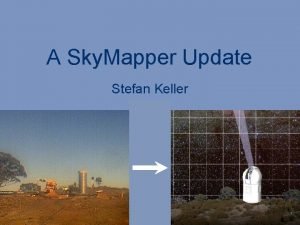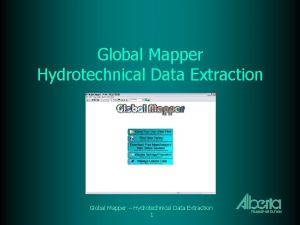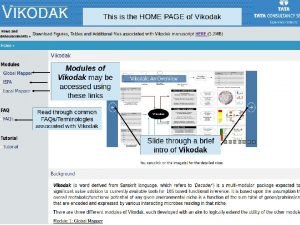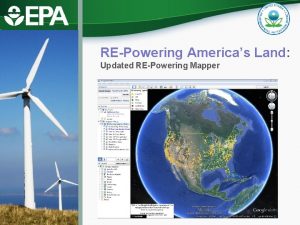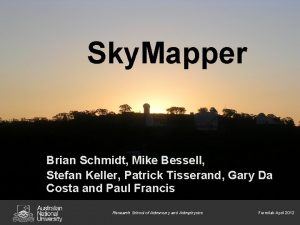Sky Mapper and the Stromlo Southern Sky Survey













- Slides: 13

Sky. Mapper and the Stromlo Southern Sky Survey Stefan Keller, Brian Schmidt, Paul Francis and Mike Bessell Research School of Astronomy & Astrophysics Slide 1

Sky. Mapper What is Sky. Mapper? • 1. 35 m with a 5. 7 sq. degree fov • To reside at Siding Spring Observatory • First light in Dec 2006 • To conduct a multi colour/epoch Stromlo Southern Sky Survey • Replacement for the 50” Great Melbourne Telescope Research School of Astronomy & Astrophysics Slide 2

Sky. Mapper Why a Sky. Mapper? • There is no deep digital optical map of the southern sky • no instrument is planned that can map the entire southern sky in multiple colours and epochs • Sky. Mapper will provide an automated large-scale imaging capability that is matched to Australian: – Science strengths; – Instrumentation (AAOmega, Gemini etc. ), and; – Conditions – poor seeing a benefit cover the sky faster! Research School of Astronomy & Astrophysics Slide 3

Sky. Mapper The Stromlo Southern Sky Survey = S 4 • Major component of Sky. Mapper telescope will be providing a survey of the southern sky – Multi-colour, multi-epoch of southerly 2 steradian – Star and Galaxy photometry (3% global accuracy) – Astrometry (better than 50 mas ) – Cadence: hours, days, months and years. – Five years to complete – Data supplied to the community without proprietary period as part of Virtual Observatory work • Complementary to SDSS but w. improvements! Research School of Astronomy & Astrophysics Slide 4

Sky. Mapper Survey Science The survey science goals are broad but some of the areas where I think Sky. Mapper stands to have largest impact are: • • What is the distribution of large Solar-System objects beyond Neptune? What is the history of the youngest stars in the Solar neighbourhood? How far does the dark matter halo of our galaxy extend and what is its shape? Gravity and metallicity for on order of 100 million stars the assembly and chemical enrichment history of the bulge, thin/thick disk and halo? Extremely metal poor stars. Undiscovered members of the local group accurate photometric calibration of galaxy redshift surveys: 2 d. F/6 d. F. bright z>6 QSOs probes of the ionization history of the Universe. Research School of Astronomy & Astrophysics Slide 5

Sky. Mapper Filter Set Ex-atmosphere Research School of Astronomy & Astrophysics Slide 6

Sky. Mapper Expected S 4 limits u vs g r i z 1 epoch 21. 9 21. 8 20. 9 20. 2 expt. time 55 35 25 25 15 15 6 epochs 22. 9 22. 8 21. 9 21. 2 Sloan Digital Sky Survey comparison 22. 0 n/a 22. 2 21. 3 20. 5 Research School of Astronomy & Astrophysics Slide 7

Sky. Mapper z – coverage SDSS (EDR) 2 d. FGRS Spectroscopic redshifts r’<18 for SDSS BJ<19. 5 ( r’<18. 5) for 2 d. FGRS Photometric redshifts SDSS to r’=20. 5 From SDSS EDR Csabai 2003 S 4 to provide: Spirals to z~0. 3 -0. 4 E 0 to z~0. 7 Research School of Astronomy & Astrophysics Slide 8

Sky. Mapper and SUMSS/SKAMP By cross-comparison of radio and optical sources we can ask: Which members of known classes of optical objects are detected as radio sources? …and with redshifts we can ask: • How does the radio luminosity function evolve with redshift? • Quantify 3 D clustering of radio sources SUMSS+DSS From Sadler & Hunstead 1999 • around 1. 5% SUMSS detections are galaxies in the 2 d. FGRS (B<19. 5) • 30% are bright enough to appear in the DSS (B<22) [Sadler + Hunstead 2001] The Stromlo Southern Sky Survey will go around a magnitude fainter than the DSS photometric z ± 0. 06 for 30% of SUMSS Research School of Astronomy & Astrophysics Slide 9

Sky. Mapper S 4 Data Products • Deliverables to the Outside User: – Data (epoch, RA, DEC, mags, galaxy shape info, …) to be available through a web-served interface which provides catalogs over a user defined area – Images to be available through a web-served interface which provides images over a user defined area (maximum size will be limited) Research School of Astronomy & Astrophysics Slide 10

Sky. Mapper S 4 Data Products How Much Data? ? ? 6 epochs x 6 colours x 4000 268, 000 pixel images 150 Terabytes + 25 Terabytes of calibration images 1 Billion Objects observed 36 times with Database is ~2 Terabytes (1 billion rows x 500 columns) Research School of Astronomy & Astrophysics Slide 11

Sky. Mapper A Concluding Timeline • • • Funding Decision, Jun 2004 Optical elements ordered Conceptual Design Review, Oct 2004 CCDs ordered, Feb 2004 Critical Design Review, August 2005 Pipeline development, mirror Blank Failures, Sep-Oct 2005 • Site Works begin Dec 2005 • First Light, Dec 2006 • Regular Operations, Apr 2007 Research School of Astronomy & Astrophysics Slide 12

Sky. Mapper A Concluding Timeline • • • Funding Decision, Jun 2004 Optical elements ordered Conceptual Design Review, Oct 2004 CCDs ordered, Feb 2004 Critical Design Review, August 2005 Data reduction pipeline development, mirror Blank Failures, Sep-Oct 2005 • Site Works begin Dec 2005 • First Light, Dec 2006 • Regular Operations, Apr 2007 Research School of Astronomy & Astrophysics Slide 13
